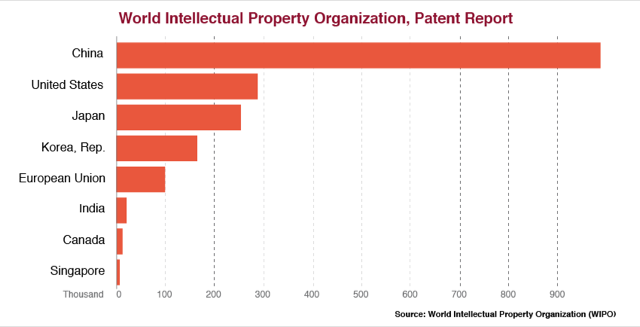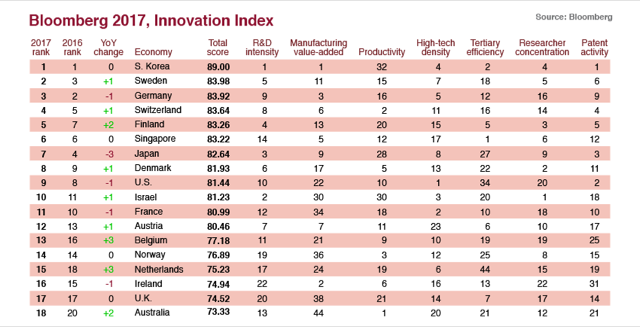13 October 2017
Asia in the fast lane
The Asian continent is ready for the technological boom
It may still be too early to say whether the twenty first century will belong to Asia but the largest and most crowded continent in the world is continuing to grow at a sustained pace, confirming its status as a motor of the global economy. According to the forecasts of the International Monetary Fund, this year growth in the Asia Pacific region will be 5.5%, higher than any other region in in the world.
There is no denying that the potential is enormous: Asia is home to around 60% of the world’s population, over half of whom are aged under 30. The continent boasts also 50% of the world’s Internet users.
So, all the ingredients are present for a boom: economic growth, the rise of the middle class, a young (and connected) population ready to play its part in the technological revolution. Although it has not yet reached the level of the West, Asia is becoming an important tech laboratory on a global level. Companies such as Alibaba, Huawei, Baidu, LG, Samsung, Toyota and Sony, to name just a few, are leading the way on this front. News about these companies and their affairs can be found in the Western press on a daily basis. Among the most recent news, Baidu’s 1.5 billion dollar fund to support the development of self-driving cars, and also the possibility that Tencent, the Chinese Internet giant, will acquire Spotify, the music streaming colossus. It seems that the West is heading to Asia and Asia is conquering the West.
To get an idea of the changes taking place, just look at the situation regarding patents. The World Bank’s database reveals that in China alone in 2015, over 900 thousand patents were registered. In 1989, the year of the revolt in Tiananmen Square, the number was just a few thousand. There has also been important progress made in South Korea, which in 2015 was responsible for over 150 thousand patents.

It is precisely South Korea that has been found to be the most innovative country in the world according to the Bloomberg Innovation Index. This is quite an extraordinary result for a country that in 1957 had a GDP comparable with that of Ghana. The key to Korean success lies in the investments in research and development (R&D). According to the World Bank, in 2015 South Korea spent 4.23% of its GDP on R&D. Japan also invested significantly with 3.28%, China invested 2.07%, just higher than Singapore (2.3%), another tiger of innovation: the dynamic city-state is one of the world’s largest magnets for investment

The data concerning R&D, a topic on which the OECD has carried out specific research, highlights however that there is not just one Asia. India is marching at a slower pace: the country invests just 0.63% of its GDP, Thailand, the Philippines and Indonesia invest even less. The data is still insufficient, of course, but the demographic and economic potential is enormous.
Asia is progressing also in the quality of its universities. In the 2016-2017 edition of the Higher Education Ranking, compiled by The Times, there are 289 Asian universities present in the list of the best 980 higher education institutions in the world. 19 of these can be found in the top 200, compared with 15 in the 2015-2016 edition. Chinese universities make up the lion’s share. The university of Beijing is judged to be the 29th best in the world and Tsinghua university is in 35th place. The University of Singapore also scores highly and the Indian Institute of Science is moving progressively up the rankings.
There is obviously great interest in Asia from the global players: all of which are searching to find a way in to the market. Generali too has been making progress. The company is present in nine countries in the region (China, India, Hong Kong, Malaysia, Thailand, Japan, the Philippines, Vietnam, Indonesia) and is betting on connectivity and digitalization. In Indonesia, Vietnam and Hong Kong the group has developed Omni-channel, a mobile platform dedicated to agents and resellers, while in India the iMoSS app provides a live service for motorists that have been involved in road traffic accident. In China and Thailand there is eCare, a service that enables customers to make an immediate claim for damages to health: just take a photo of the receipt from the provider of the medical service and submit it via the app. Innovation in Asia is not only a question of technology. For example, in 2016 the Indonesian division of Unilever was judged by Forbes to be the continent’s most innovative company and the sixth most innovative on a global level. Unilever is a multinational that owns numerous brands in the sectors of food and drink, products for the home and cleaning products. In Indonesia, the fourth most inhabited country in the world, and therefore a market with huge potential, Unilever has managed to penetrate not only the urban market but also the market in rural areas, which is no less important, and where many people are finally beginning to encounter the consumer market. Just one more aspect that makes Asia one of the most interesting places in the world.
